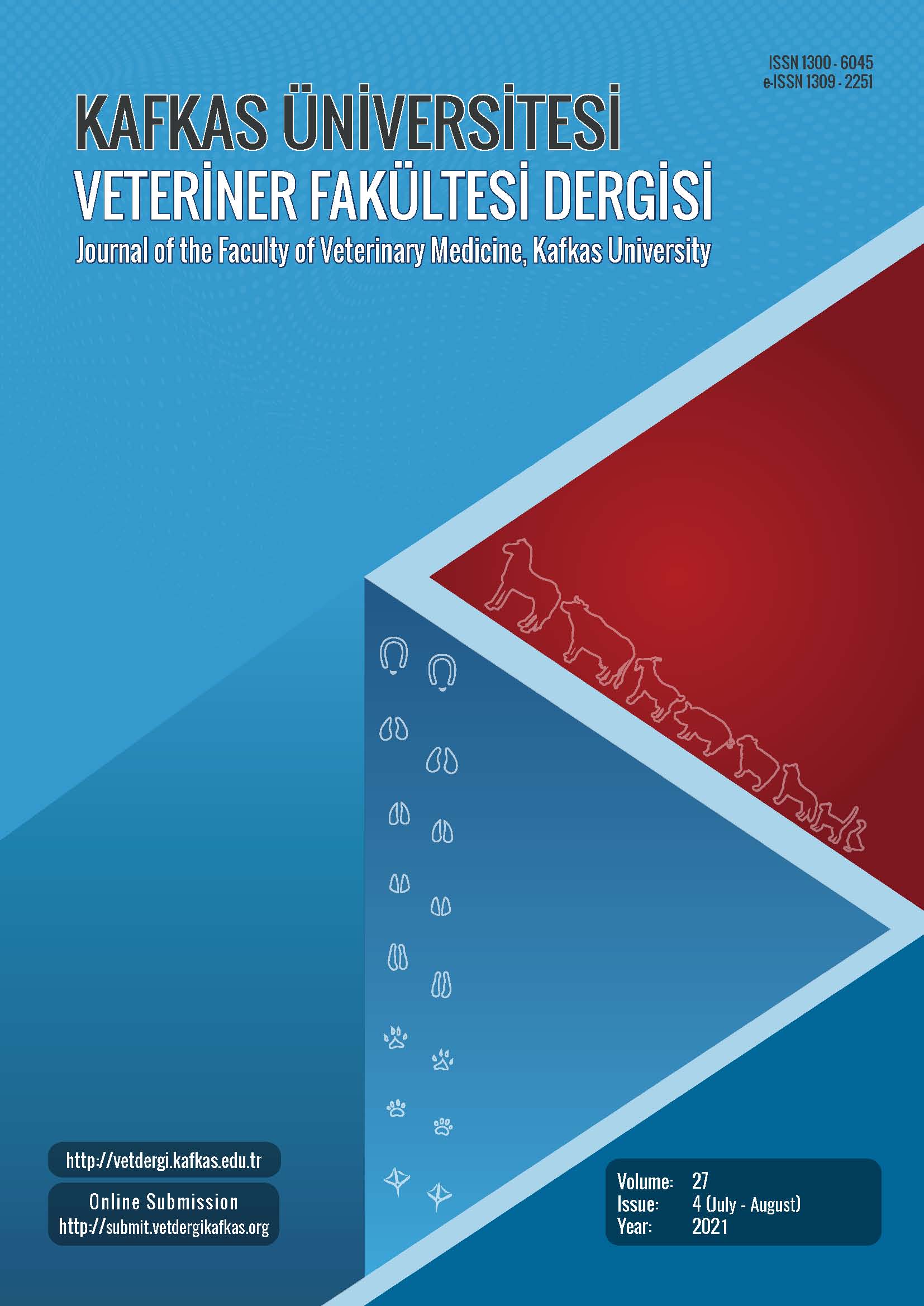
This journal is licensed under a Creative Commons Attribution-NonCommercial 4.0 International License
Kafkas Üniversitesi Veteriner Fakültesi Dergisi
2021 , Vol 27 , Issue 4
Predicting The Growth Curve of Body Weight in Madura Cattle
1Indonesian Beef Cattle Research Station, Pahlawan Rd. No. 2 Grati, Pasuruan, East Java, 67184, INDONESIA2Research Center for Biotechnology - Indonesian Institute of Science, Bogor-Jakarta Rd. Km. 46 Cibinong, Bogor, West Java, 16911, INDONESIA DOI : 10.9775/kvfd.2021.25448 The growth curve of livestock animals is important to evaluate the biological development managed with a farming management system. This study aimed to estimate the growth curve of body weight (BW) in Madura cattle (Bos indicus) kept at the breeding management. Three non-linear models of Logistic (L), Gompertz (G) and Von Bertalanff y (B) were performed in this study using 186 records data and computed with SPSS 16.0 package. Research showed that the asymptotic weight (male/female) was reached of 220.80/218.02 kg (L), 277.72/274.13 kg (G) and 333.92/329.83 kg (B). The weight of infl ection (male/female) was reached of 110.40/109.01 kg (L), 102.10/100.78 kg (G) and 98.94/97.73 kg (B). The time of infl ection (male/female) was reached of 10.89/10.47 months (L), 10.09/10.23 months (G) and 9.80 months (B). Moreover, the coefficient of determination (R2) in all models included of high category i.e. 0.68 (male) and 0.70 (female). However, three goodness-of-fit parameters of root mean squared error (RMSE), Akaike"s (AIC) and Beyesian (BIC) values revealed that G and B models were more accurate than the other models for male and female, respectively. It can be concluded that about 68-70% of body weight of animals in a study can be explained by non-linear models of L, G and B. Keywords : Body weight, Growth curve, Infl ection, Madura cattle, Non-linear models










